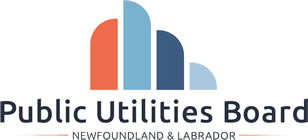Question 19: What are diagnostic and treatment protocols?
On June 25, 2024 the Government of Newfoundland and Labrador announced new diagnostic and treatment protocols under the Automobile Insurance Act. The regulations governing the protocols (NLR 36/24) are available in the June 21st edition of the Newfoundland and Labrador Gazette and will come into effect on December 2, 2024.
Diagnostic and treatment protocols allow accident victims to get quicker and more affordable treatment for the most common types of injuries resulting from automobile accidents such as sprains, strains and whiplash associated disorders. The protocols require that automobile insurers adopt processes to allow accident victims to seek immediate treatment from a health care practitioner of their choice, without having to pay for health care services out of pocket.
Some key highlights of the diagnostic and treatment protocols are summarized below:
- The implementation of diagnostic and treatment protocols was a recommended change following the Board’s Review of Automobile Insurance in Newfoundland and Labrador in 2019. The Board noted that these protocols should be put in place collaboratively by the insurance industry, health care professionals and government given the benefits to injured persons of early access to treatment and potentially faster recovery times.
- The protocols allow accident victims who have suffered sprain, strain or whiplash type injuries to be quickly diagnosed and have access to treatments in accordance with established medical best practices. The goal is to get the injured person on the road to recovery as soon as possible.
- Access to treatment is immediate. Accident victims can visit an authorized health care practitioner of their choice for diagnosis, and receive a set number of treatments based on their type of injury. There is no waiting for the insurer to approve a physician referral.
- There are no out of pocket expenses or financial barriers to access to treatment. Health care providers who choose to provide service under the protocols can bill the insurance provider directly, eliminating the need for patients to pay up front and wait for reimbursement from their insurer.
- Accident victims will no longer be required to exhaust their private health insurance coverage before claiming coverage under their automobile insurance policy. Treatment under the protocols will be primary coverage (i.e., the plan that pays first).
- The protocols are not mandatory for accident victims. If accident victims wish to seek a treatment that falls outside of those provided by the protocols, they are free to pursue that treatment.
- Those providing diagnosis and treatment under the protocols are required to do so using evidence-based treatment specific to the injury and what works best for the patient.
- The health care practitioner will be required to complete a treatment plan, which sets out the course of treatment for the patient, including referrals to an adjunct therapist, as necessary, to treat or rehabilitate the injury.
- The health care practitioner may request an assessment from an Injury Management Consultant (IMC), who may recommend that treatment continue under the protocols or, if appropriate, continue outside of the protocols. If this is the case, the claimant can then rely on their normal Section B benefits.
Questions or concerns with respect to the diagnostic and treatment protocols should be directed to the Government Modernization and Service Delivery. |
|
Navigation Menu
Applications and Proceedings
Guidelines
Orders
Legislation
Bulletins and Reports
Questions and Answers
|
